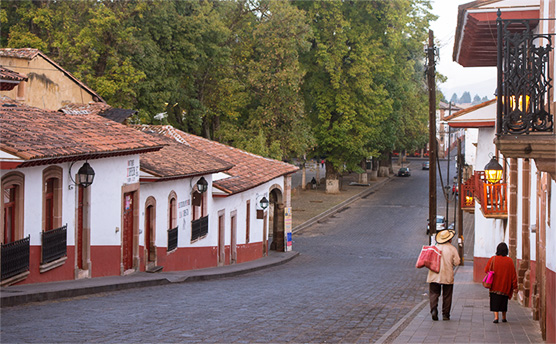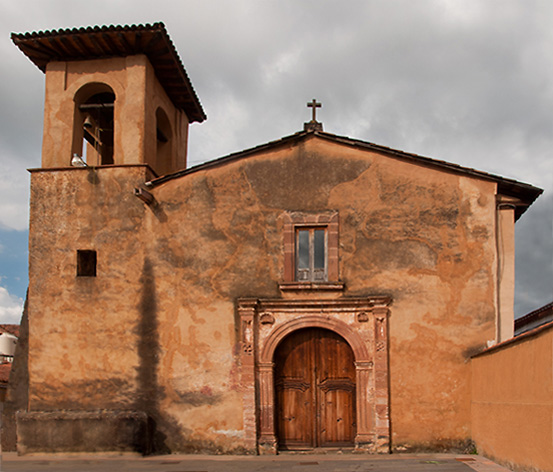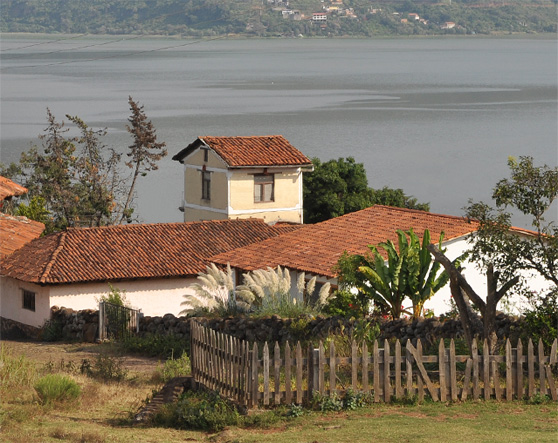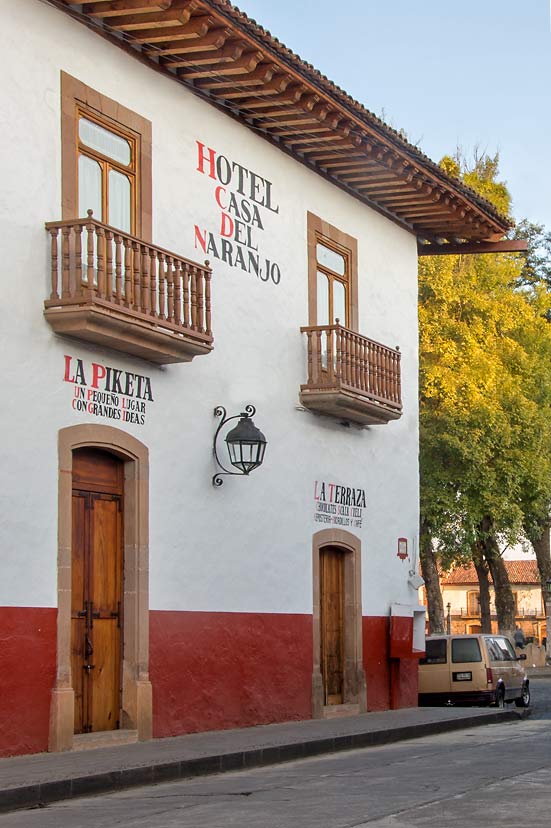
The Hotel Casa del Naranjo is located in the heart of Patzcuaro, which allows you to discover just a few steps the most representative historical, religious and artistic sites of our city.
Patzcuaro is one of the most beautiful traditional villages of America, in the state of Michoacan, Mexico. It is a true gem of colonial architecture where you can see religious monuments of Baroque and neoclassical style in excellent condition. Patzcuaro won the category of magical town in the year 2002.
Its buildings of adobe and tile give a unique look, in keeping with plazas and fountains. The always friendly treatment of its people is conjugated in an atmosphere of charm that invites you to return again and again.

Patzcuaro Municipality has a population of approximately 48,000 inhabitants, 4,840 of whom speak indigenous languages.
The main economic activity is tourism, and to a lesser extent, other activities such as fishing, manufacturing of wooden colonial furniture, textiles, cork products, blankets, wooden handicrafts such as trays, masks and toys; jewelry boxes, Ironwork, artistic jewelry, religious figures, confetti and crafts of natural fibers.




The Hotel Casa del Naranjo is located in a building from the late seventeenth century; It has a location in front of the Plaza Vasco de Quiroga; that makes it stand out for being corner and lack of portal, the quiet side street Dr. Coss with a bench height and middle and topped with a corrugated on both patios, generating a very unique side wall facade.
Since the mid-nineteenth century was known by neighbors as Casa del Naranjo for having one in the main courtyard. This house had different owners, often formed part of the church, as it was condoned for the benefit of charities, at one time was for the benefit of the nuns; also it belonged to Regidor capitulate of the City of Valladolid (today Morelia) Don Pedro Alday, after passing through several owners, in the early nineteenth century one of its owners was Don Luis Solchaga character of Patzcuaro and in 1907 belonged to Don Luis G. Arriaga.
As a vestige of the typical domestic architecture in colonial times, yet its adobe walls uproots on stone foundations, the wide corridors with clay tile, the beams, the shingle and patios with pillars centennial wood are the elements that welcome us and thus, this house is part of the architectural catalog of Patzcuaro.
The names of the rooms refer to Haciendas and representative spots of the time. Patzcuaro in 1882 was part of the fifteen district named by the legislature of the State of Michoacan; Patzcuaro, one of the three municipalities in the prefecture was conformed by several small communities like Cuanajo, Pichataro, Ihiuatzio, Janitzio, etc. and 10 farms including The Tareta, that during the time of the Augustinians belonged to this congregation and it was dedicated to the planting for their support, as well as others who were in the lake region, the word Tareta is a word of Purepecha origin, which means a place where it is planted and the Zoromuta meaning grass or grass to make cordage, who was also one of the chaplaincies of the Augustinians; Lagoon and Lake Patzcuaro known for evangelization and well described in the shield of his appointment as city of Patzcuaro described: They ordered in that shield "... there is a water lagoon color with a church on a Peñal flanked by the apostles St. Peter and St. Paul and near the lagoon, and church, the cathedral church.

